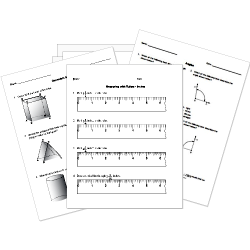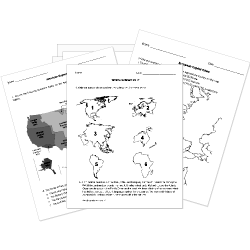Introduction to Gases
Introduction to Gases
This lesson aligns with NGSS PS1.A
Introduction
Matter, the fundamental constituent of the universe, can be defined as anything that occupies a definite space and possesses volume. It comprises diverse entities such as molecules, atoms, and subatomic particles. Categorization of matter introduces the distinction between solids, liquids, and gases. Each state exhibits unique characteristics, with gases standing apart due to their distinctive properties. Notably, gases have no structure at all. This sets them apart from solids and liquids. Air is the most common example of mixture of gases. In this article, we will learn about what are gases, Gas Laws, and Ideal gases vs Real gases.
What are Gases?
Gases represent a state of matter characterized by molecules that are in constant motion and are not bound by a fixed shape or volume. Unlike solids, which maintain a rigid structure, and liquids, which take the shape of their container but maintain a constant volume, gases are highly compressible and expand to fill the entirety of their container. The behavior of gases is governed by the kinetic theory, which suggests that gas particles are in constant, random motion.
The Microscopic World of Gases:
At the microscopic level, gases are composed of tiny particles known as molecules. These molecules are in perpetual motion, colliding with each other and the walls of their container. The kinetic energy associated with this motion is directly proportional to the temperature of the gas, a principle foundational to the understanding of gas behavior.
Gas Laws
To comprehend the behavior of gases under different conditions, scientists have formulated a set of laws known as the gas laws. These laws describe the relationships between various properties of gases such as pressure, volume, temperature, and the number of moles. Among these laws, Boyle's Law, Charles's Law, and Avogadro's Law provide valuable insights into the interplay of these parameters and are crucial for understanding how gases behave under different circumstances.
Pressure and Its Measurement:
Pressure is a key property of gases, reflecting the force exerted by gas molecules as they collide with the walls of their container. The standard unit of pressure is the pascal (Pa), but other common units include atmospheres (atm), millimeters of mercury (mmHg), and pounds per square inch (psi). Understanding pressure is fundamental to grasping gas behavior, and instruments such as barometers and manometers are employed to measure it accurately.
Ideal Gases vs. Real Gases
The concept of an ideal gas serves as a theoretical model that simplifies the understanding of gas behavior. According to the kinetic theory of gases, an ideal gas consists of point particles with no volume and undergoes perfectly elastic collisions. While real gases may deviate from the ideal behavior under certain conditions. The ideal gas law, PV = nRT, provides a useful approximation for understanding the relationship between pressure, volume, temperature, and the number of moles in a gas.
The Gas State Variables:
Understanding the behavior of gases involves examining four key state variables: pressure (P), volume (V), temperature (T), and the number of moles (n). Altering any one of these variables can influence the others, as elucidated by the gas laws. For instance, increasing the temperature of a gas while keeping the pressure constant results in an expansion of the gas volume, as predicted by Charles's Law.
Boyle's Law:
- Describes the inverse relationship between the pressure and volume of a gas at constant temperature.
- Mathematical representation PV=constant
Charles's Law:
- Establishes the direct relationship between the volume and temperature of a gas at constant pressure.
- Mathematical representation: V/T=constant
Avogadro's Law:
- Asserts that equal volumes of gases at the same temperature and pressure contain an equal number of molecules.
- Mathematical representation: V/n=constant
Gas Phase Changes:
Gases undergo phase changes based on variations in temperature and pressure. The transition from a gas to a liquid is known as condensation, while the reverse process is termed evaporation. Additionally, when a gas transforms directly into a solid, the process is termed deposition, and when a solid transforms directly into a gas, it is referred to as sublimation.
Summary
- Gases represent a state of matter characterized by molecules that are in constant motion and are not bound by a fixed shape or volume.
- The behavior of gases is governed by the kinetic theory, which suggests that gas particles are in constant, random motion.
- Gas laws describe the relationships between various properties of gases such as pressure, volume, temperature, and the number of moles.
- According to the kinetic theory of gases, an ideal gas consists of point particles with no volume and undergoes perfectly elastic collisions.
- Real gases may deviate from the ideal behavior under certain conditions.
Related Worksheets:













